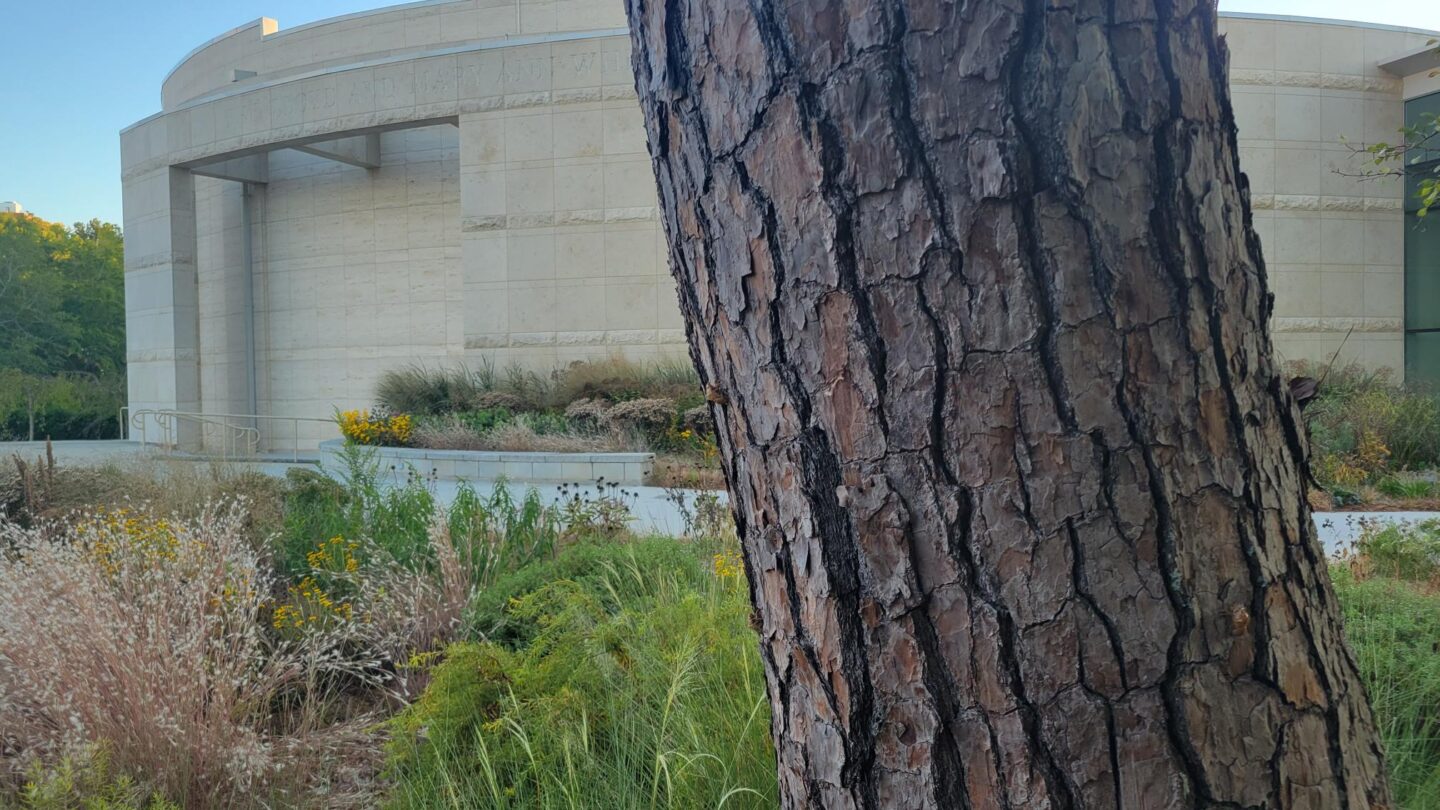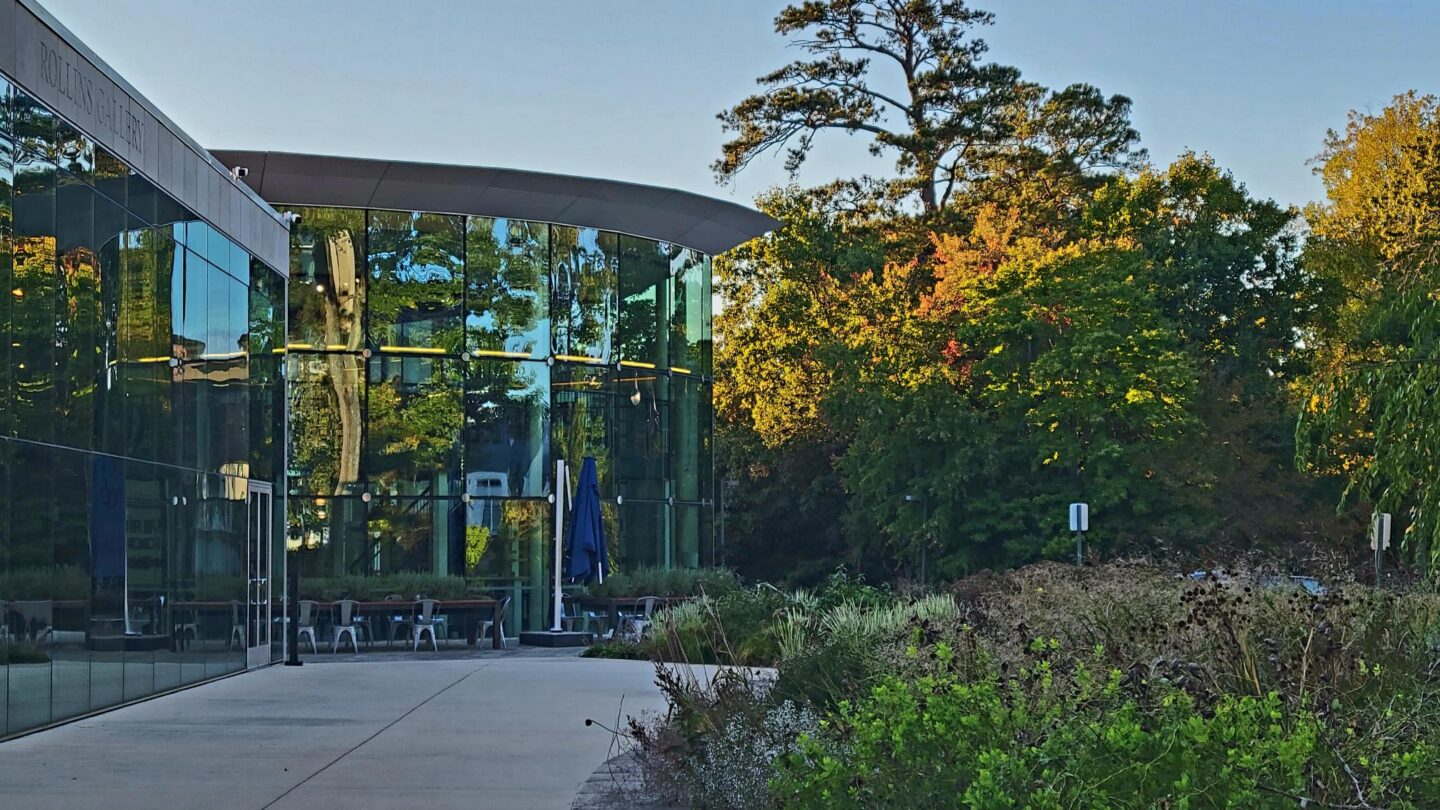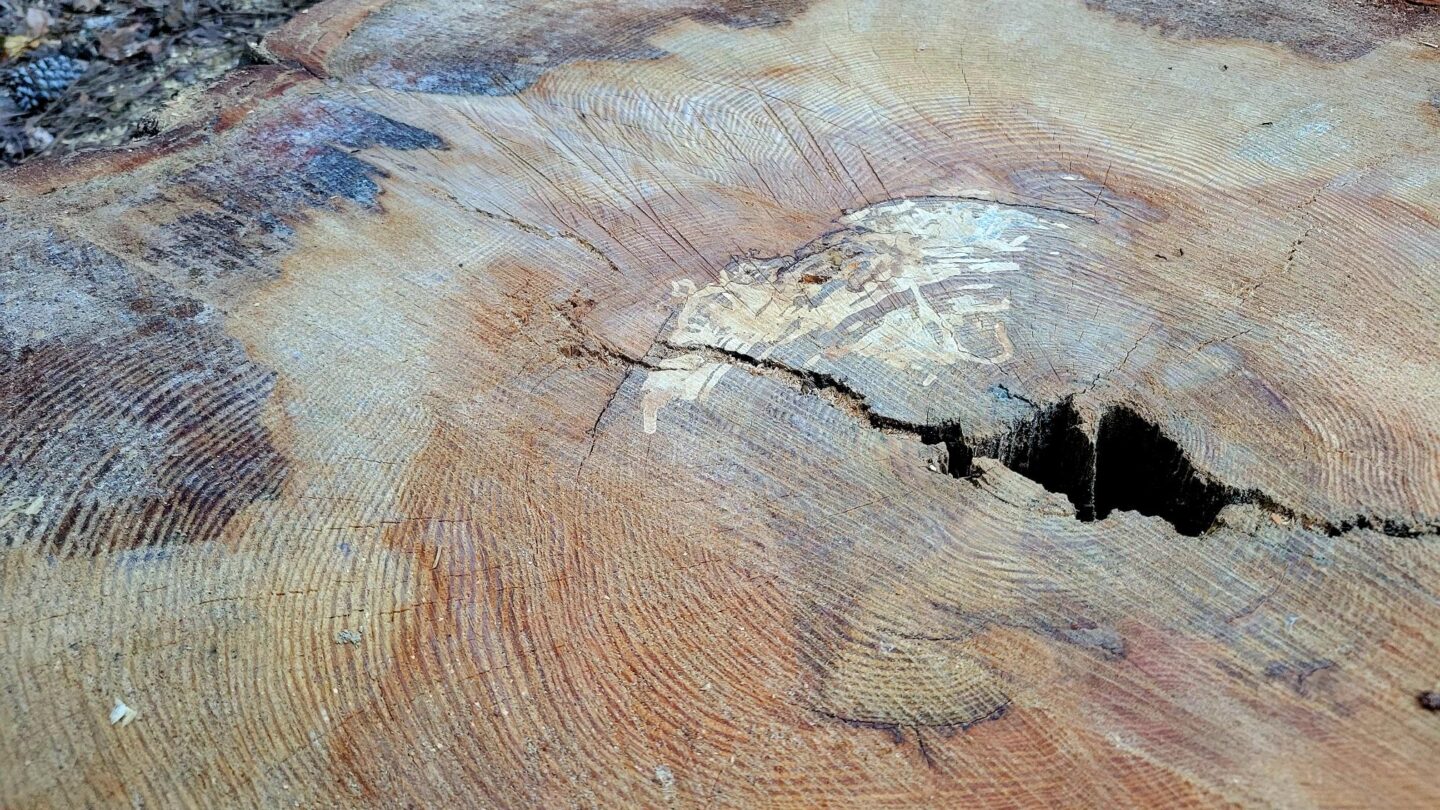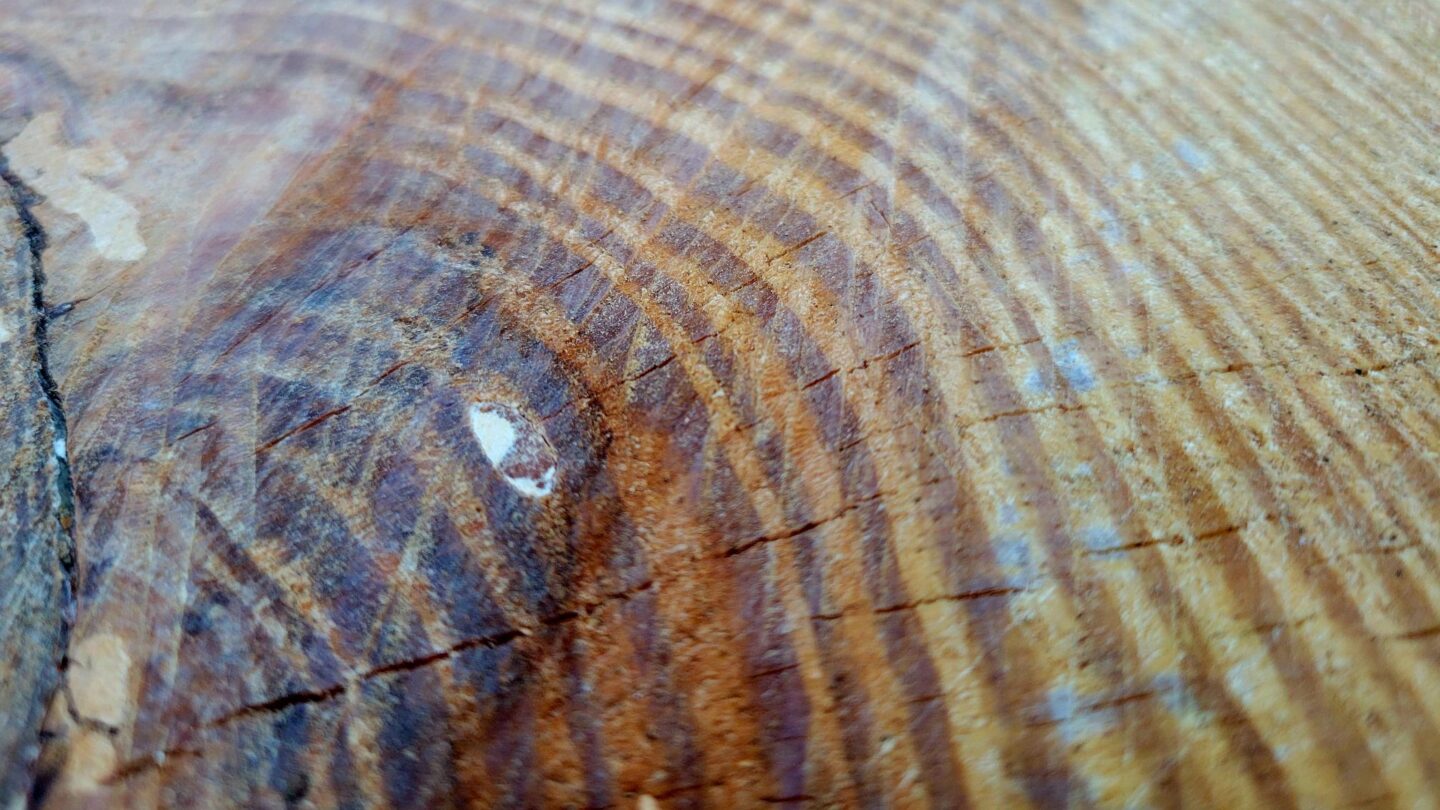
Anyone who has spent much time in Georgia, or in the Piedmont region in general, is familiar with loblolly pine whether they realize it or not. Loblolly pine (Pinus taeda) is the most common pine species in Georgia, and odds are if you see a pine tree in or around Atlanta, it is most likely a loblolly. The Goizueta Gardens at Atlanta History Center is no exception to this rule and has some exceptional loblolly pines throughout its landscape.
The name loblolly comes from an Old English word meaning a thick gruel or porridge and was used in reference to wet, boggy, and muddy places. When European settlers first encountered loblolly pines in the New World, they tended to find them growing in low, wet areas. The name resulted from this early association, but the loblolly pine is by no means restricted to wet areas and in general does not like standing water or overly saturated soils. Loblolly pine can be found across the Piedmont and Coastal Plain of the mid-Atlantic and southeastern United States.
Loblolly pine has benefited greatly in the past 200 years from the actions of humans on the landscape of the American South. European settlers cleared vast areas for farmland as they moved west into the Piedmont, removing forests of hardwoods and longleaf pine. As farmland was sapped of its fertility, settlers moved on and cleared more forest, leaving land denuded of topsoil and heavily eroded.
Swan Woods still bears the scars of 19th-century Southern agriculture, with washed-out sink holes, gullies, and terracing scattered through the trees.
This landscape of degraded farmland provided good conditions for the expansion of the loblolly pine population, which likes poor, slightly acidic clay soils. The loblolly also needs sun to germinate, so it cannot spread into already forested land. The loblolly, along with sweetgum (Liquidumbar styraciflua) and tulip poplar (Liriodendron tulipifera), are the first trees to colonize abandoned fields, gradually shading out the grasses and other herbaceous plants that proliferate on abandoned farmland. With lots of degraded, sunny, abandoned fields across the South, the loblolly prospered.
The primary human use of loblolly pine has been as a lumber tree. It is fast-growing and not sensitive to soil or moisture, making it adaptable and easily cultivated for timber. In the past, loblolly served as a source of turpentine—a chemical produced from the sap of pine trees. Another use was as a solvent in industrial processes and construction. The resin produced by the loblolly was useful for waterproofing, especially on wooden ships. Today, loblolly is the most commonly planted tree in commercial tree farms in the Southeast and is the backbone of the Southern timber industry.
As trees have died on our campus, the age when reforestation of this small sliver of the Piedmont began has narrowed. During summer 2022, several large loblolly pines died. The pines showed between 110 to 160 growth rings, which are the record of yearly growth laid down each year of a tree’s life. These pines revealed that the land preserved within Goizueta Gardens began to reforest shortly after the end of the American Civil War, between 1862 and 1872. The forest that covers much of the campus today is the forest that began to grow at that time.
A short walk around the woods on the History Center grounds will reveal many large loblolly pines—their tops above the surrounding deciduous trees. These pines are the remnant of the pioneer pines that took over the abandoned farmland that preceded the forest of today.

The forest at Atlanta History Center can be classified as an oak-pine-hickory forest—so named because these are the dominant trees found in this type of forest system. The oak-pine-hickory forest is the most common forest found in the Georgia Piedmont and occurs in dry-mesic conditions where the landscape is dry but not too dry, often associated with slope and thin soils. Though oak-pine-hickory is the dominant forest type on the Atlanta History Center campus, there are also significant portions dominated by oaks, as can be seen along the ridge top around the Swan House. As the slope of the ridge decreases and flattens out along the creek below the Swan House and the main museum complex, the forest transitions to a mesic, or relatively wet, forest composition, as more water is retained in the soil due to the decreased slope. This area of campus forest has more large tulip poplar (Liriodendron tulipifera) and American beech (Fagus grandifolia) trees.
Throughout these gradations in forest type on campus, there are large loblolly pines. These loblollies are the last remaining survivors of the initial wave of tree growth on campus. They have weathered and born witness to many changes to the landscape throughout their long lives, and many are now reaching a very advanced age for their species. As they are slowly senescing, the forest around them continues to change, as beeches and hickories rise to take their place and become the dominant trees in the next cycle of the life of the forest. The pines at Atlanta History Center are likely to be some of the oldest in Atlanta and are just another reason that a visit to Goizueta Gardens and the forest protected there is well worth the time.




